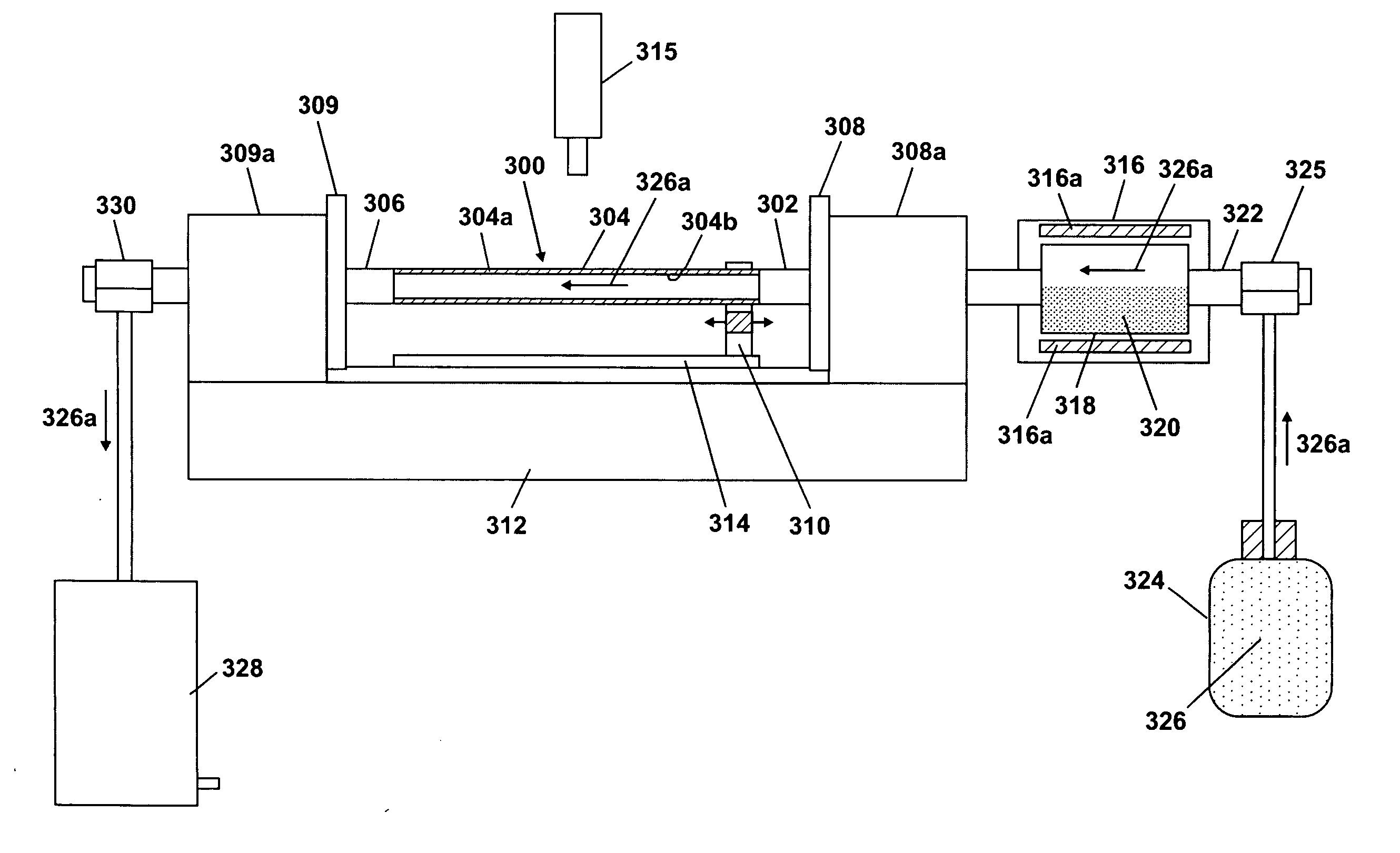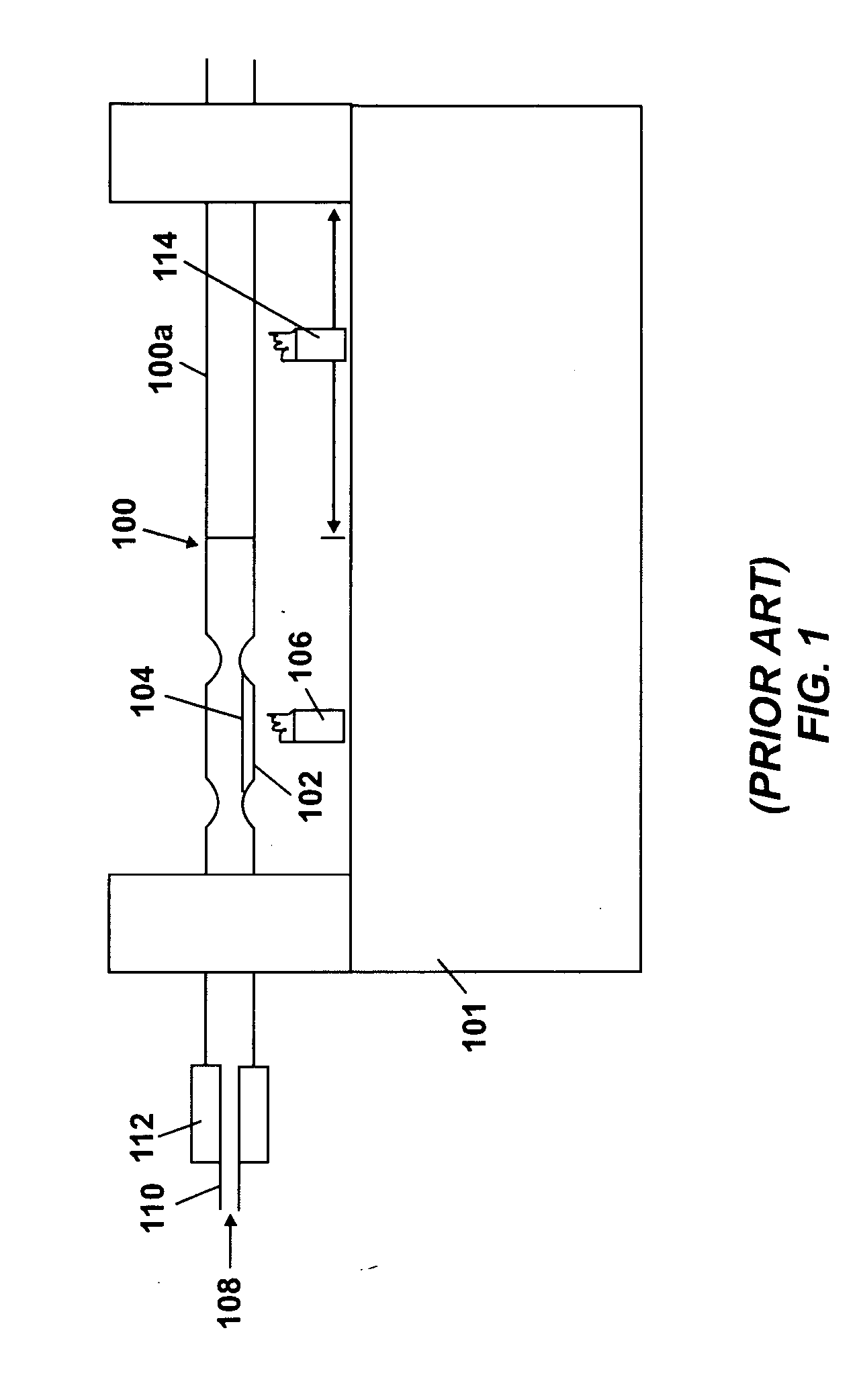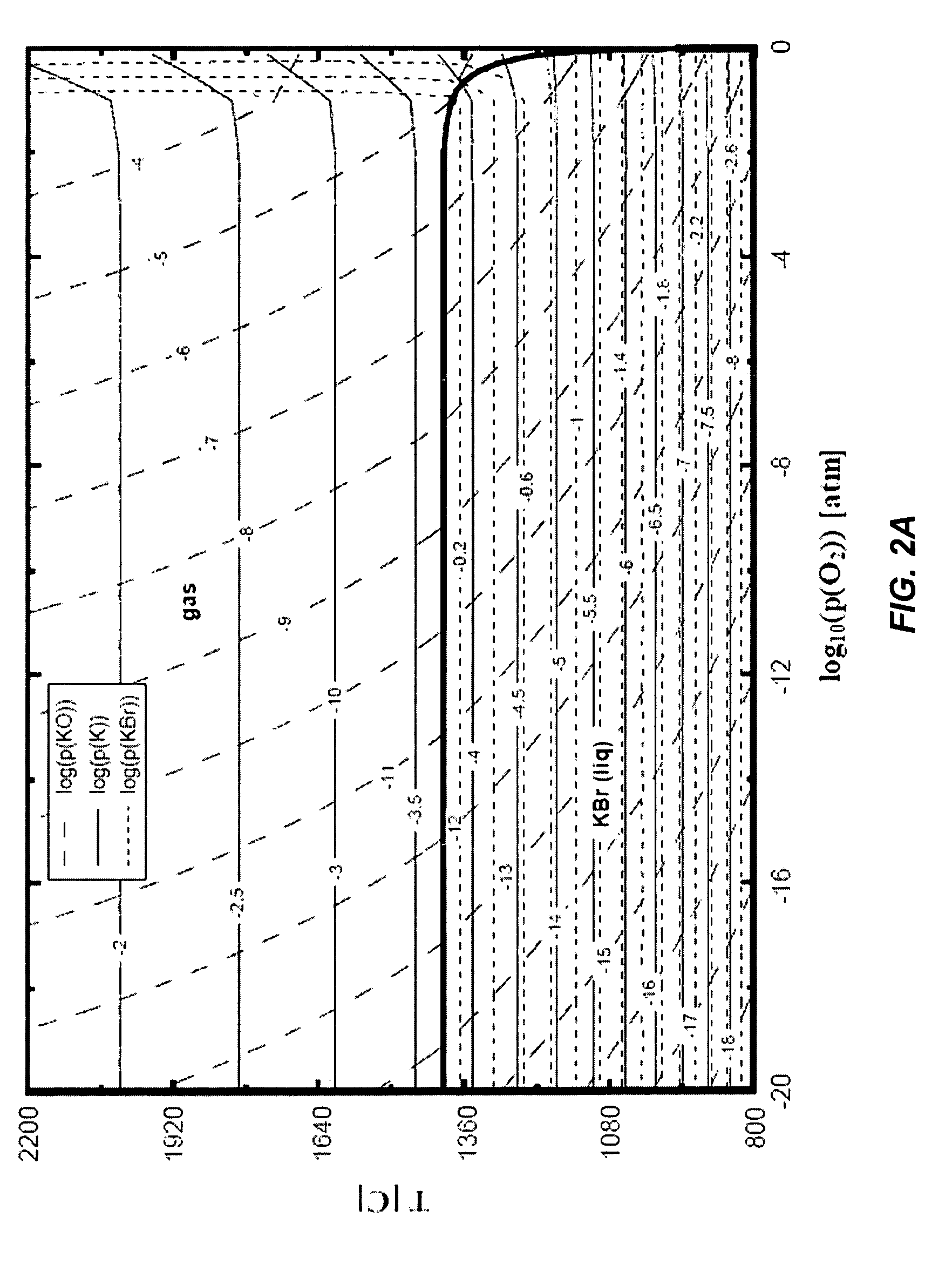Method of doping silica glass with an alkali metal, and optical fiber precursor formed therefrom
a technology of alkali metal and silica glass, which is applied in the field of low-loss optical fiber making, can solve the problems of cristobalite defects in the final glass, the near-total volatilization of the alkali metal dopant, and the difficulty of doping silica glass with alkali metals
- Summary
- Abstract
- Description
- Claims
- Application Information
AI Technical Summary
Benefits of technology
Problems solved by technology
Method used
Image
Examples
example 1
[0029] A powdered mixture is prepared using 12.5 g potassium bromide and 12.5 g potassium superoxide. The powder is preferentially mixed in a water-free atmosphere so as to eliminate hydration of the super oxide. The oxide, peroxide, or super oxide of any other alkali metal could be used in conjunction with an appropriate halide. The powder is loaded into the reservoir (318 in FIG. 3). The powder is heated to approximately 900° C. and allowed to equilibrate for several minutes. A carrier gas is flowed over the surface of the molten salt solution and down through a silica glass tube at a rate of one liter per minute. The carrier gas may be oxygen or other suitably neutral gas. An oxygen-hydrogen burner is used as the heater (310 in FIG. 3). The oxygen and hydrogen flow rates to the heater are adjusted to obtain a wall temperature on the silica glass tube of approximately 2080° C. The heater is then traversed along the silica glass tube, in a direction away from the reservoir, at a ra...
example 2
[0030] A 25 g charge of potassium nitrate is loaded into the reservoir (318 in FIG. 3). The nitrate of any other alkali metal could be used instead if it is desired instead of potassium. The reservoir is heated to approximately 880° C. to melt the nitrate. A carrier gas is flowed over the surface of the molten nitrate and down the length of a silica glass tube. This carrier gas can be oxygen or any neutral gas. The oxygen and hydrogen gas flow rates to the heater (310 in FIG. 3) are adjusted to give a temperature of approximately 2080° C. The heater is then traversed down the silica glass tube, in a direction away from the reservoir, at a rate of approximately 1 cm / s. This accomplishes diffusion doping of the potassium into the surface of the silica glass tube. Additional heater passes may be performed to incorporate more of the potassium into the surface of the silica glass tube and / or drive the alkali metal deeper into the silica glass tube. Using this procedure, peak (i.e. the hi...
example 3
[0031] A 50 g charge of alkali nitrate is placed between constrictions (404a, 408a in FIG. 4) in a silica glass tube. Oxygen and hydrogen gas flow rates to a heater (414 in FIG. 4) are adjusted to levels that produce a tube wall temperature of about 1200° C. Then, the heater is traversed down the length of the silica glass tube at about 10 cm / min to melt the nitrate into a puddle. The gases supplied to the heater are adjusted to raise the wall temperature of the silica glass tube to approximately 2080° C. and a second pass is performed at 1 cm / min. The second slow high temperature pass causes alkali metal to diffuse into the silica glass tube. Additional heater passes may be performed to incorporate more of the potassium into the surface of the silica glass tube and / or drive the alkali metal deeper into the silica glass tube. Using this procedure, peak (i.e. the highest level across the tube wall) levels of about 2 weight percent K2O dopant have been achieved.
PUM
| Property | Measurement | Unit |
|---|---|---|
| wavelength | aaaaa | aaaaa |
| temperature | aaaaa | aaaaa |
| temperature | aaaaa | aaaaa |
Abstract
Description
Claims
Application Information
 Login to View More
Login to View More - R&D
- Intellectual Property
- Life Sciences
- Materials
- Tech Scout
- Unparalleled Data Quality
- Higher Quality Content
- 60% Fewer Hallucinations
Browse by: Latest US Patents, China's latest patents, Technical Efficacy Thesaurus, Application Domain, Technology Topic, Popular Technical Reports.
© 2025 PatSnap. All rights reserved.Legal|Privacy policy|Modern Slavery Act Transparency Statement|Sitemap|About US| Contact US: help@patsnap.com



